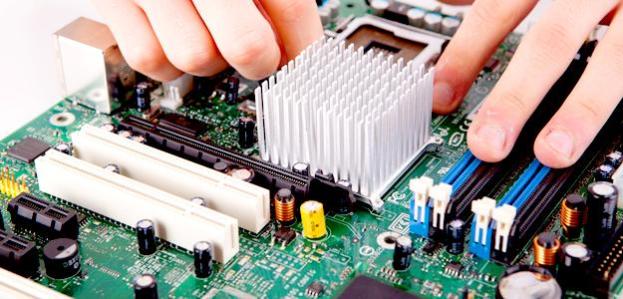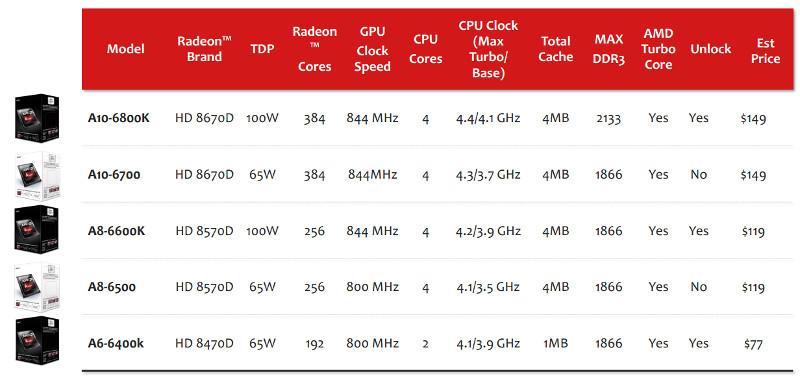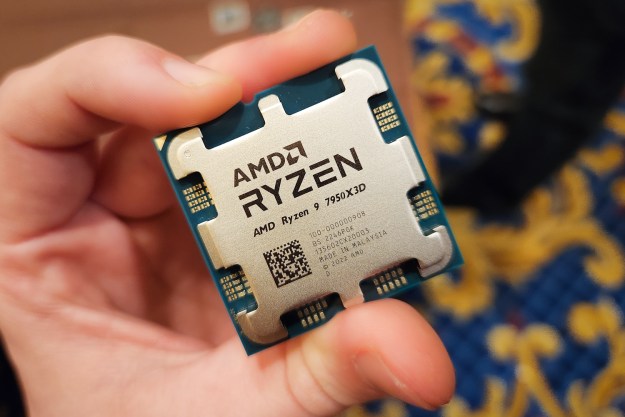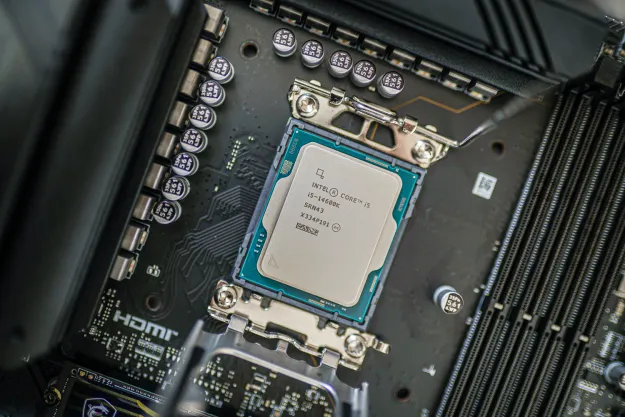
Computer processors are complex products that force a difficult job on the marketing departments at AMD and Intel. How can hardware designed by some of the world’s most talented engineers be easily explained to consumers?
It’s a question that neither company has been able to fully solve, but both make serious attempts to translate their product lines into something palatable to the average buyer. They do this by bestowing their hardware with product names that effectively work as codes. Each part of the name says something about the product.
Strangely, AMD and Intel don’t put much effort into explaining how these codes work after they’ve invented them. You won’t find much information at retail stores, either – indeed, salespeople sometimes seem as bewildered as consumers. Let’s demystify the topic by going through the popular current processor lines one at a time.
AMD FX-Series
Processors from AMD are the more difficult to understand of the two companies because they have more products from different generations currently on the market. AMD still sells Athlon II and Sempron processors that are years old. Its latest line of products, however, is the FX-Series.
The AMD FX-Series, which is only available for desktop computers, works like this. We’ll use the FX-8350 as an example.

The product line will always be FX, so let’s skip to core count. This is a simple one-to-one translation. If it’s an FX-4100, it has four cores. If it’s an FX-8350, it has eight cores. And so on.

Generation is the line of FX processors the product is from. Higher is better. Model number is used to show how different processors from the same generation compare. A product with a higher model will typically have a higher base clock speed than one with a lower model number.
Using this formula to decode the AMD FX-8350 tells you it is a FX-series processor that has eight cores. The generation number of 3 tells you that it is newer than the old FX-8100, and the model number of 50 tells you it is faster than its sibling, the FX-8300.
FX-Series processors are not part of the AMD Fusion brand. They don’t include an integrated graphics processor, so any desktop with an FX processor will need a discrete video card to output video. All processors in the FX-Series ship with an unlocked core multiplier that makes them easy to overclock.
AMD A-Series, E-Series, and C-Series processors

AMD’s mainstream APUs, which include integrated Radeon graphics, follow a different formula. Let’s use the AMD A8-5600K as an example.

The product line tells you if a product is an A-Series, E-Series processor, or C-Series processor. The A-Series is AMD’s mainstream laptop and desktop processor line, and the E-Series and C-Series are meant only for inexpensive, low-power systems like netbooks and tablets (in other words, they’re slower).
Product line originally told consumers how many cores was in a product, but that hard-and-fast rule has been complicated by new products. In general the AMD E and C-series offer either oneor two cores, the A4 is dual-core and the A6, A8, and A10 are usually quad-core. There are a few A6 processors that break these rules by offering only two or three cores, however, so we recommend double-checking the core count.
The first number after the dash is again the generation. Higher numbers are better, but they can only be compared to other laptop or desktop processors. AMD sometimes uses different generation numbers for laptop and desktop parts even when they’re built from the same architecture.
All the numbers after the generation number are the model number. Higher is better and, once again, usually represents better performance.
Last is the suffix. Processors with an “M” are meant for laptops, and those with a “K” have an unlocked core multiplier which makes overclocking easier. Parts with no suffix are standard desktop processors with no special traits.
So, with all of this in mind, the AMD A8-5600K’s product name tell us it is a quad-core, unlocked desktop processor in the company’s latest generation of products. If this seems a bit convoluted, well, we agree – but this is par for the course among processor manufacturers.
AMD A-Series and E-Series integrated graphics
AMD calls the A-Series and E-Series Fusion processors because they come with an integrated graphics chip. Fortunately, the code used to describe these isn’t that hard to understand. Let’s use the Radeon HD 7560D as an example. This is the integrated graphics component shipped on the AMD A8-5600K.
The “Radeon HD” prefix can be ignored. AMD puts this prefix on every single integrated graphics processor. The company does have a different name for its brand of enterprise graphics components, but they aren’t used for integrated graphics and can be ignored.

These generation and model numbers are also used by AMD’s discrete video cards for both mobile and desktop applications and can be roughly compared to them. The Radeon HD 7560D, for example, offers performance similar to a Radeon HD 7470M.
Intel Celeron and Pentium
There are three model lines in Intel’s stable. Two of them, Celeron and Pentium, are targeted towards budget buyers who just want something capable of everyday computing. We’ll use the Intel Pentium G630T as our example.
That was simple, wasn’t it? Unfortunately it’s simple because Intel leaves a lot of information out of the code. There’s no easy way to tell how many cores a product has, nor is there any way to tell what generation it is.

The T suffix is the only part of the name that provides meaningful information. It designates a processor built to use less power than the standard part. The Pentium G860 is designed to a 65 watt TDP, and the G860T has a much lower 35-watt TDP. A Celeron or Pentium with the U suffix is always slower and more expensive than a processor with the same model number and no suffix. Intel now uses the same suffix scheme for Celeron and Pentium that is used for Core, and that’s explained further in the next section.
Processors in the Celeron and Pentium lines never have Turbo Boost and, with the exception of a few older Pentium products that are no longer in production, never have Hyper-Threading.
Intel Core
Intel provides a lot of coded information in its Core products, which makes up the bulk of computers on the market today. Let’s use the Core i5-3570K as the example.
There are three Core product lines – i3, i5, and i7. All Core i3 processors are dual-core in both desktops and laptops. All of them have Hyper-Threading, but they all lack Turbo Boost.
Intel’s Core i5 is in mid-range products, but the processors differ significantly between desktops and laptops. Almost all Core i5 desktop processors are quad-core (there are a few exceptions) and have Turbo Boost, but most lack Hyper-Threading. Core i5 laptop processors are dual-core (no exceptions) and have both Turbo Boost and Hyper-Threading.

The generation number is simple. Higher is better. It should be noted, however, that instead of having a 1, first generation products have no generation number. That means a first generation product will have a name like Core i5-650 instead of Core i5-1650. Intel apparently doesn’t find the number one impressive. Model numbers are also usually a higher-is-better affair, but relative performance can be changed by the suffix.
The important suffixes for desktop parts are K, S, R, and T. The K models have an unlocked core multiplier that makes them easier for enthusiasts to overclock. The S and T models are low-power versions built to draw as little power as possible. Intel used the S suffix during the second generation and switched to the T suffix for the third generation. Finally, the R suffix is new for 4th-gen parts and is used to designate a processor with Iris Pro integrated graphics.
Standard dual-core laptop processors use the M suffix. Low-voltage parts meant for Ultrabooks and tablets replace the M with a U or Y, but first-generation low-voltage parts used the UM suffix instead, and second-generation low-voltage processors had no unique suffix, making them more difficult to identify.
Since this is a lot of information, let’s go through another example – this time with a mobile processor.

This is a Core i7 mobile processor, so that tells us it has Turbo Boost and Hyper-Threading. The 4 shows that it’s a 4th-gen part, which is the most current, and a model number of 700 tells us how it will perform relative to other similar Intel processors. Finally, the HQ suffix designates the processor as a quad-core.
Easy? Okay, maybe not. But it should begin to make sense after re-reading the code a few times.
Intel graphics
Intel’s graphics have a very simple product code because there’s not as many products. It’s as follows, using HD 4000 as an example.

The company doesn’t provide any generational information in its product code. So far, this hasn’t caused any problems because there aren’t many versions of Intel HD and the model numbers have accurately portrayed the performance. Intel HD 2500 is newer than Intel HD 3000, for example, but also slower, so it was accurately given a lower model number.
With the newest 4th-generation Core processor, Intel introduced a new line of high-end integrated graphics known as Iris. These parts still have an Intel HD model number but are often called Iris or Iris Pro in casual use. Both products use the same architecture as the non-Iris parts, so, while they are quicker, they’re no different in function or features.
Consumers should note that the performance of two integrated graphics processors (IGPs) with the same model number may not be exactly the same. This is because Intel stretches performance as far as it can within the limits of a processor’s specified power draw. For example, the Intel Core i7-3610QM (a quad-core for laptops) has an HD 4000 part that’s a bit quicker than what is found in the Intel Core i5-3317U (a dual-core for Ultrabooks and ultraportables).
If comparing two Intel processors with an identical Intel HD variant, it’s safe to assume the faster processor also has a faster graphics solution. Don’t expect the difference to be night and day, however. It’s usually good for just a few frames-per-second in a modern 3D game.
Conclusion
We hope this explanation has better equipped you to decode product names on the fly. Eventually, AMD and Intel will replace these product codes with different ones, but it will likely be a few years before any major changes are made. If you have any questions feel free to post a comment.
Editors' Recommendations
- I’ve used Intel CPUs for years. Here’s why I’m finally switching to AMD
- The best budget CPUs you can buy in 2024
- The best processor for video editing in 2024 across all budgets
- Gamers are reportedly returning Intel Core i9 CPUs in droves
- The one AMD 3D V-Cache processor you should avoid at all costs






